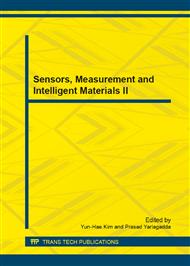p.524
p.528
p.532
p.542
p.550
p.554
p.560
p.564
p.569
Research of Supporting Platform of Machine Olfaction
Abstract:
A template technology has been applied to the platform of machine olfaction. The simulation sensor array template receives field odor data or simulates the data via recorders in database, and transmits to the platform. The platform consists of several distributed monitoring subsystems based on the simulation template. Each subsystem matches a set of gas sensors array, and has functions of logging data, communicating and simulating industry application. The data from the subsystem and the preprocessed data are sent to the web server center and stored in the databases. The data has been collected, and sensor performance analyzing are performed by several layer algorithms. While the exchanging algorithms convert the field odor data to gas concentrations with ppm values, the expert systems or recognition algorithms analyze the ppm values and show the application results. All data of each layer are stored in server database systems, and each layer algorithms can been updated and saved. Finally, the supporting platform that applied to industrial monitoring systems, was developed with a kind of industrial configuration softwares, web MIS and databases, and was utilized to realize monitor to the environmental systems by the simulation template.
Info:
Periodical:
Pages:
550-553
Citation:
Online since:
December 2013
Authors:
Price:
Сopyright:
© 2014 Trans Tech Publications Ltd. All Rights Reserved
Share:
Citation:


